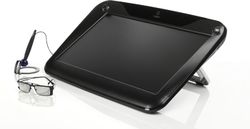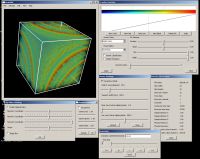Difference between revisions of "Projects"
From Immersive Visualization Lab Wiki
(→zspace Linux Fix (Matt Kubasak, Thomas Gray, 2013-2014)) |
|||
| Line 39: | Line 39: | ||
<hr> | <hr> | ||
| − | ===[[ | + | ===[[Zspace Eye Flip]] (Matt Kubasak, Thomas Gray, 2013-2014)=== |
<table> | <table> | ||
<tr> | <tr> | ||
<td>[[Image:ZspaceProduct.jpg|250px]]</td> | <td>[[Image:ZspaceProduct.jpg|250px]]</td> | ||
| − | <td> | + | <td>We created an Arduino-based solution to fix the problem that in Linux the Zspace's left and right views are initially in random order. The Arduino, along with custom software, is used to sense which eye is displayed when, so that CalVR can switch the eyes if necessary, in order to show a correct stereo image.</td> |
</tr> | </tr> | ||
</table> | </table> | ||
Revision as of 09:46, 30 January 2014
Past Projects
Active Projects
Altered Reality (Jonathan Shamblen, Cody Waite, Zach Lee, Larry Huynh, Liz Cai 2013)
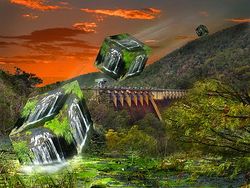 |
Focal Stacks (Jurgen Schulze, 2013)
 |
SIO will soon have a new microscope which can generate focal stacks faster than before. We are working on algorithms to visualize and analyze these focal stacks. |
Android Head Tracking (Ken Dang, 2013)
 |
The Project Goal is to create a Android App that would use face detection algorithms to allows head tracking on mobile devices |
Camelot (Thomas Gray, 2013)
 |
The goal of this project is to create a multi-camera video capture system. |
Zspace Eye Flip (Matt Kubasak, Thomas Gray, 2013-2014)
ZSculpt - 3D Sculpting with the zSpace (Thinh Nguyen, 2013)
 |
The goal of this project is to explore the use of the zSpace VR system for 3D sculpting. |
Magic Lens (Tony Chan, Michael Chao, 2013)
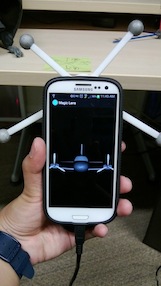 |
The goal of this project is to research the use of smart phones in a virtual reality environment. |
Pose Estimation for a Mobile Device (Kuen-Han Lin, 2013)
 |
The goal of this project is to develop an algorithm which runs on a PC to estimate the pose of a mobile Android device, linked via wifi. |
Multi-User Graphics with Interactive Control (MUGIC) (Shahrokh Yadegari, Philip Weber, Andy Muehlhausen, 2012-)
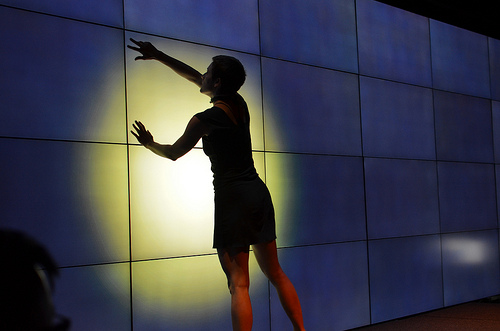 |
Allow users simplified and versatile access to CalVR systems via network rendering commands. Users can create computer graphics in their own environments and easily display the output on any CalVR wall or system. See the project in action, and a condensed lecture on the mechanisms. |
